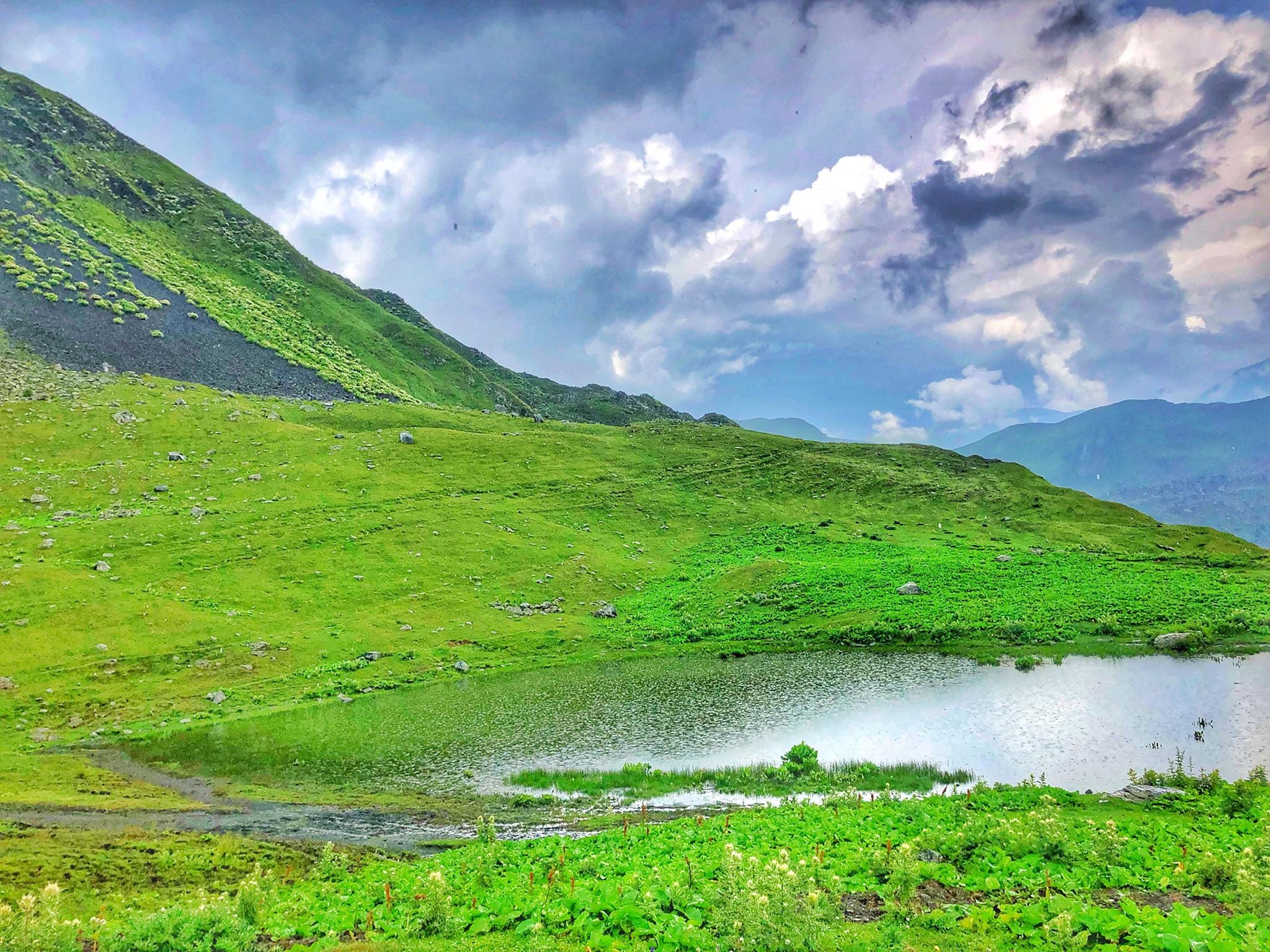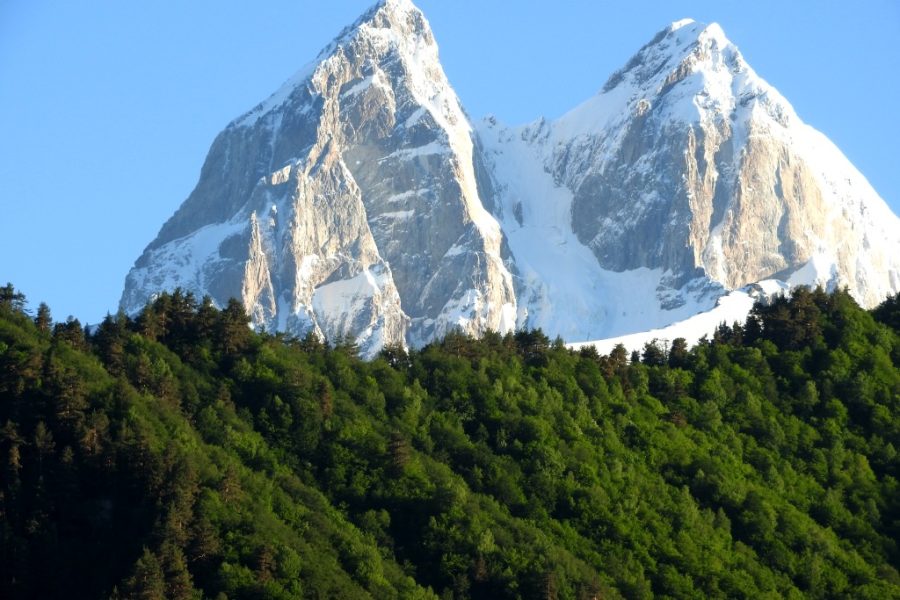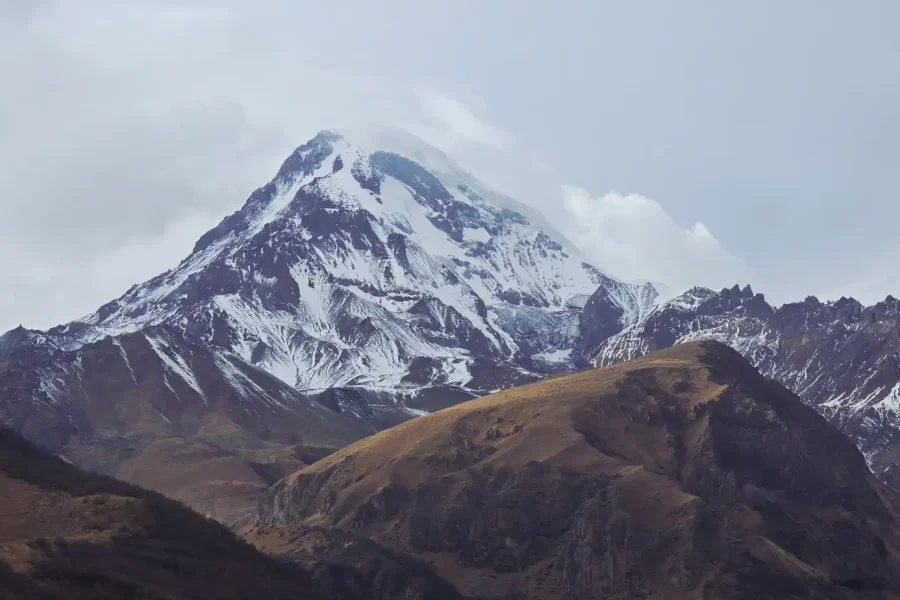Batsara State Nature Reserve: Sanctuary of the Ancient Yew Forest
Batsara State Nature Reserve is a very important place in Georgia’s Kakheti region, inside the Akhmeta Municipality. It is mostly dedicated to protecting the Batsara Yew Forest, which is one of the most unusual and ancient forest ecosystems still around. This reserve is in the Batsara River valley, which is part of the larger Pankisi Gorge region. It protects a very large and well-preserved stand of English Yew (Taxus baccata) on the northern slopes of the Greater Caucasus mountains. Some of the yew trees in this forest are thought to be hundreds, if not thousands, of years old. This makes it a relict ecosystem, a living window into the past.
Batsara is a State Nature Reserve that was first established in 1935 and then confirmed again under Georgia’s current system of protected areas. It is in the IUCN’s most strict category (Ia – Strict Nature Reserve). This classification makes it clear that its main purpose is to be a place for scientific research and ecological monitoring, with almost all human access and activities banned to protect the very sensitive yew population and the natural processes that happen there.
The reserve covers a rough area that is between 700 and 2000 meters high. Its land is made up of steep hills, deep river basins, and a humid climate that is good for growing trees. The yew grove is the crown jewel, but the reserve also protects a number of mixed deciduous forests with maple, ash, lime, beech, and hornbeam trees. This makes for a rich mosaic of ecosystems. The Caucasus forests support a wide range of animals, including Roe Deer, Wild Boar, Brown Bear, Lynx, and many birds that are common in temperate mountain woods.
Because of its strict preservation policy, Batsara State Nature Reserve is not open to the public for tourism or fun. Only scientific researchers who have special licenses from Georgia’s Agency of Protected Areas can get in. The reserve is most valuable as a unique natural laboratory for studying how forests change over time, long-term ecological processes, and the biology of the ancient yew trees, not as a place for visitors to enjoy. It is a major part of the Batsara-Babaneuri Protected Areas complex and a very important place for protecting Taxus baccata around the world. It also helps Georgia’s biodiversity legacy and its duties under international conservation policies like the Emerald Network. Managing climate change and making sure that this strange sanctuary stays safe are still two of the most important conservation goals.
Easy to Identify
Official Name:
Batsara State Nature Reserve (ბაწარის სახელმწიფო ნაკრძალი). Often called and run as part of the larger Batsara-Babaneuri Protected Areas, which also include the Babaneuri Strict Nature Reserve and the Ilto Managed Reserve.
Type of Protected Area:
State Nature Reserve (the same as IUCN Category Ia—Strict Nature Reserve). This is the most protective type of area because it focuses on scientific research and conservation. Usually, the public is not allowed to enter.
Date When it started:
Founded in 1935, it became part of the modern system of protected areas around 2003–2004.
Managing Body:
Georgia’s Agency of Protected Areas is in charge of the government.
Accessibility and location
Location:
Akhmeta Municipality, Kakheti region, Georgia, is where it is located. The Pankisi Gorge region is mostly in the Batsara River valley, on the northern slopes of the Greater Caucasus range.
Map/Coordinates:
The center is roughly at 42° 15′ N and 45° 17′ E.
Closest Cities/Towns:
Akhmeta is the main city in the area. There are nearby villages in the Pankisi Gorge, like Birkiani and Jokolo, but getting to the reserve itself is hard.
How to Get There:
Akhmeta has roads that lead to the Pankisi Gorge area. But people in general are not allowed to go into the Batsara State Natural Reserve. Only scientific staff members with special permissions from the Agency of Protected Areas can get in. There is no public transportation to the reserve.
Size and physical description
Area:
About 30.4 square kilometers (3,040 hectares).
Topography:
The Caucasus foothills have sharp slopes, and the Batsara River cuts through a valley. The height changes a lot, from about 700 to 2000 meters above sea level.
Geology and Main Features:
Located in the Caucasus fold mountains, which are known for having sedimentary and possibly metamorphic rocks. The main feature is the deep valley of the Batsara River.
Hydrology:
The Batsara River and its network of small mountain tributaries are the most important hydrological features in the reserve.
Climate:
Most of the time, it’s humid. Higher altitudes have colder winters with a lot of snow, while lower elevations have milder weather. Rainfall throughout the year helps forests grow thick and lush.
Aim and Significance
Reason for Designation:
The main reason is the strict protection of the unique, ancient, and huge natural forest of English Yew (Taxus baccata), which is one of the largest such stands still standing in the world. Other goals include protecting the rich Caucasus mixed forest ecosystems that are connected to them.
Most Important Values:
The relict yew woodland is very important for plants and animals. Very useful for scientific research on the long-term ecology of forests and the biology of yews. Keeping biodiversity alive is linked to unspoiled alpine forests.
International Recognition:
Part of the Emerald Network of Areas of Special Conservation Interest. The yew forest is important for conservation all over the world.
Biodiversity (Plants and Animals)
Habitats and ecosystems:
Mostly made up of mixed mountain and deciduous forests. The main habitat is the unique woodland where English Yew (Taxus baccata) grows either alone or with other deciduous trees.
Key Plant Species:
The English Yew (Taxus baccata) is the most important species. Other significant tree species are maple (esp. Acer laetum), ash (Fraxinus excelsior), lime/linden (Tilia spp.), Oriental beech (Fagus orientalis), and Caucasian hornbeam (Carpinus caucasica). There are many different kinds of herbaceous plants on the forest floor.
Key Animal Species:
Mammals include the Roe Deer (Capreolus capreolus), the Wild Boar (Sus scrofa), the Brown Bear (Ursus arctos), the Wolf (Canis lupus), the Eurasian Lynx (Lynx lynx), the Pine Marten (Martes martes), the Badger (Meles meles), and the Red Fox (Vulpes vulpes). The birdlife in the Caucasus woodlands is typical and includes woodpeckers, thrushes, warblers, and raptors. There are also reptiles and amphibians.
Endangered/Rare Species:
Taxus baccata is an endangered or rare species that needs to be protected. The Brown Bear and Lynx are on Georgia’s Red List and are important for conservation around the world. There are also many types of birds that could be saved.
Info for Visitors
Visitor Center:
Because of access issues, Batsara State Nature Reserve can’t have a separate public tourist center. The central office of the Agency of Protected Areas or a shared administrative office for the Batsara-Babaneuri complex in another location usually handles information.
Hours of Operation and Seasons:
Not important for public access. Scientific access is allowed all year long, but in the winter, when there is snow, it can be hard to get to higher heights.
Entrance Fees and Permits:
No one is allowed to enter. The Agency of Protected Areas of Georgia requires special licenses for scientific study that must be obtained in advance.
Trails and Routes:
There are no public trails for hiking in the reserve.
Activities:
All fun activities, like hiking, camping, picnicking, fishing, hunting, and so on, are completely off-limits. Permitted activities are limited to approved scientific research and supervision.
Accommodation:
There are no places to stay inside the reserve. The closest options might be simple guesthouses in towns outside the reserve in the Pankisi region or in Akhmeta.
Facilities:
There are no visitor facilities like toilets or picnic areas inside the reserve.
Safety Advice:
Not important for regular visitors. Researchers need to be ready for remote alpine environments and follow safety rules.
Rules and Laws
Code of Conduct:
Rules that are very strict and only allow scientific personnel to enter are in place to keep the least amount of impact.
Prohibitions:
This list includes, but is not limited to, camping, lighting fires, collecting or disturbing any plants or animals, bringing in new species, fishing, hunting, and using drones.
Zoning:
The whole area is a strict protection zone (IUCN Category Ia).
Management and Protection
Managing Body:
Management Authority: Most likely a local government that is dedicated to the Batsara-Babaneuri Protected Areas and the Agency of Protected Areas of Georgia.
Conservation Efforts:
In the yew forest, the main goal is to let natural processes happen without interference and to protect the area as strictly as possible. Long-term ecological monitoring, perimeter patrols to stop people from breaking the law, and allowing scientific research are all part of this.
Threats/Challenges:
Climate change may have long-term effects on the delicate yew ecosystem. Pests or diseases could harm the yews, fires could spread from nearby areas, and the strict protection regime must be upheld against any possible illegal incursions (though being far away helps).
History and Culture
A Brief History:
The Batsara yew forest was first designated as a reserve in 1935 because people noticed that it was different from other forests. It was later added to Georgia’s modern, internationally focused system of protected areas.
Cultural Importance:
The reserve is mostly about nature, but it is next to the Pankisi Gorge, which is a culturally important place because it is home to Georgia’s Kist people (who are related to Chechens) and ethnic Georgians.
Unique Features and Interesting Facts
- Home to one of the biggest, oldest, and best-preserved natural woods of English Yew (Taxus baccata) in the world.
- The yew forest is a living remnant that shows what kinds of forests were around in the past.
- The fact that it is a Strict Nature Reserve (IUCN Ia) means that it is very important for science and conservation, so preservation is more important than recreation.
- Some of the single yew trees in the reserve are thought to be very old, maybe more than 1000 years old.





Leave a review